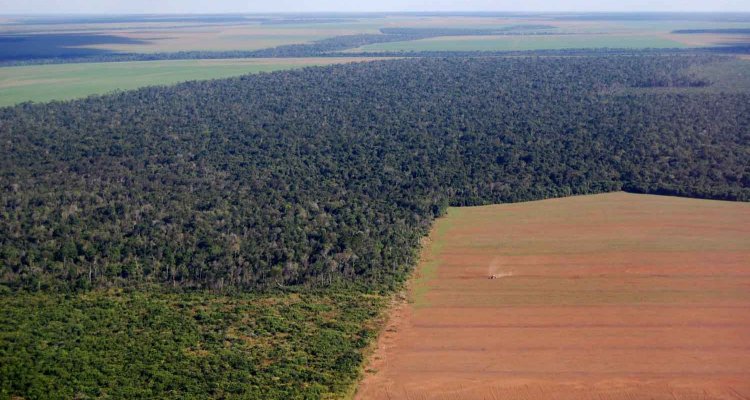
News
Agriculture drives more than 90% of tropical deforestation
Halting deforestation will require a step-change in approach, and to be effective measures must address underlying and indirect roles of agriculture, says a recently published study in Science. This research finds that between 90 and 99 percent of all deforestation in the tropics is driven directly or indirectly by agriculture. Yet only half to two-thirds of this results in the expansion of active agricultural production on the deforested land.
The study is a collaboration between many of the world’s leading deforestation experts and provides a new synthesis of the complex connections between deforestation and agriculture, and what this means for current efforts to drive down forest loss. Following a review of the best available data, the new study shows that the amount of tropical deforestation driven by agriculture is higher than 80%, the most commonly cited number for the past decade.
This comes at a crucial time following the Glasgow Declaration on Forests at COP26 and ahead of the UN Biodiversity Conference (COP15) later this year and can help ensure that urgent efforts to tackle deforestation are guided and evaluated by an evidence base fit for purpose. “What surprised us was that a comparatively smaller share of the deforestation – between 45 and 65 percent – results in the expansion of actual agricultural production on the deforested land. This finding is of profound importance for designing effective measures to reduce deforestation and promote sustainable rural development,” says Florence Pendrill, lead author of the study at Chalmers University of Technology, Sweden.
The fact that agriculture is the main driver of tropical deforestation is not new. However, previous estimates of how much forest has been converted to agricultural land across the tropics varied widely – from 4.3 to 9.6 million hectares per year between 2011 and 2015. The study’s findings narrow down this range to 6.4 to 8.8 million hectares per year and helps explain the uncertainty in the numbers.
Deforestation 'for nothing'
“A big piece of the puzzle is just how much deforestation is ‘for nothing’,” observed Prof. Patrick Meyfroidt from UCLouvain and F.R.S.-FNRS in Belgium. “While agriculture is the ultimate driver, forests and other ecosystems are often cleared for land speculation that never materialised, projects that were abandoned or ill-conceived, land that proved unsuitable for cultivation, as well as due to fires that spread into forests neighboring cleared areas.”

Understanding the significance of these drivers is key for policy makers – whether in consumer markets such as the European Union’s recently proposed due diligence legislation for “deforestation free products”, private sector initiatives for specific commodities, or for rural development policy in producer countries.
The study makes clear that a handful of commodities are responsible for the majority of deforestation linked to actively producing agricultural land — well over half of which is linked to pasture, soy and palm oil alone. But it also calls out the shortcomings of sector-specific initiatives that are limited in their ability to deal with indirect impacts. The study’s findings point to the need for supply chain interventions to go beyond a focus on specific commodities and risk management, to help drive genuine partnerships between producer and consumer markets and governments
Three critical gaps for target efforts to reduce deforestation
Finally, the study highlights three critical gaps where a stronger evidence base is needed to better target efforts to reduce deforestation.
- “While forest montoring has made huge advances in the last decades, we are still lacking a consistent global deforestation product which hinders our ability to assess overall forest conversion trends.
- We also need better data on the coverage and expansion of specific commodities to better understand their relationship with forest conversion and to inform supply chain measures.
- The final critical gap we identified is that comparativly little is known about agriculture-driven deforestation in tropical dry forests and forests in Africa,” said Dr. Veronique De Sy of Wageningen University. “There is an urgent need for better monitoring and quantification of land use and land use change in tropical forest landscapes, not only to give insight in the complexities of agriculture-forest interactions but also to evaluate the succes of current efforts to curb deforstation.”
Despite these knowledge gaps and remaining uncertainties, the study stresses that a step-change in efforts to effectively tackle and curb deforestation and conversion of other ecosystems and foster sustainable rural development is urgently needed. The Glasgow Declaration on Forests recognised the importance of jointly addressing the crises of climate and biodiversity loss and set a new level of ambition for tackling deforestation and promoting sustainable agriculture. The authors of this new study say it is paramount that we begin to see individual countries and policymakers prioritise the realisation of this ambition.